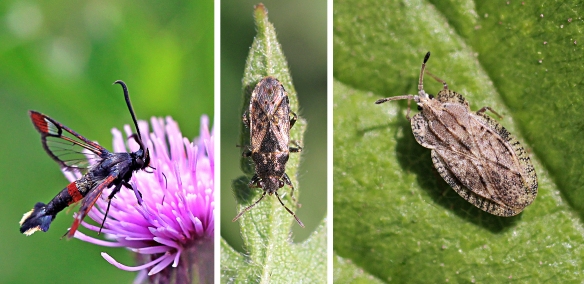I have always thought that funds should be made available for creating more hedges. In Britain we have lost many of our native hedgerows – mainly due to modern methods of monoculture farming and under-management – contributing to sharp declines in bird and mammal populations. Native hedgerows are important habitats supporting lots of wildlife, and act as barriers against soil erosion and flooding. In our parks planting tends to be prettified with non-native species, and our gardens are partitioned to the inch with wooden fences, chicken wire or brick walls. True, you can recreate a hedge by trailing plants up these vertical man-made dividers but they are poor substitutes for the real thing – living, breathing, chunky, organic hedgerows complete with tangles, twigs and hidey-holes for nesting birds and mammals to take shelter in.
In Warwick Gardens funding is being spent on planting a native ‘edible’ hedgerow along the railway side of the park. This excites me as that area has always been a bit sparse when it comes to variable vegetation, and being north facing and surrounded by trees also rather dark, so this will introduce new species into the mix. The Conservation Volunteers have already prepared the ground and waiting to plant; plum and wild pear, hawthorn, wild rose, honeysuckle and gooseberry are among the proposed newbies arriving. But there are some losses: the huge bed of nettles supporting nettle bugs and spiders; a large buddleja bush which suffered poisoning when Railtrack poured chemicals on the Japanese knotweed, but had struggled on to live up to the heights of its common name the butterfly bush, has been clipped right back; an overgrown bramble, which had also been poisoned but fought back to yield very large blackberries, and was a perfect hiding place for sawflies. I will miss the patch of black horehound which has kept a family of wool-carder bees happy for the past couple of years, and dashed my hopes of finding Pied shield bugs. And I will miss the thistles. These kept me glued to the flowers in August when I could guarantee to see my favourite digger wasp Cerceris rybyensis feasting on nectar along with small blues, ruby-tailed wasps, Braconid wasps, bumble and honey bees, and tiny spear thistle lacebugs nestling amongst the spiky leaves. One year a red-tipped clearwing moth visited, causing commotion in the London moth world as they are seldom seen in urban areas. Thankfully the large hawthorn has been left untouched, with added bushes to follow, as last year I found box bugs – a first for Warwick Gardens – and I am hoping to see them again this year.
Even though we will have to wait a while before our hedgerow establishes itself I look forward to seeing what invertebrates decide to move in. Will I add to my species count? Warwick Gardens already has a remarkable reputation for attracting ‘interesting’ insects and I am sure we will be welcoming more. In the meantime I am going to try and relocate the thistles to the other side of the park.

